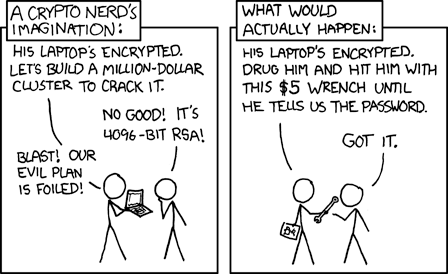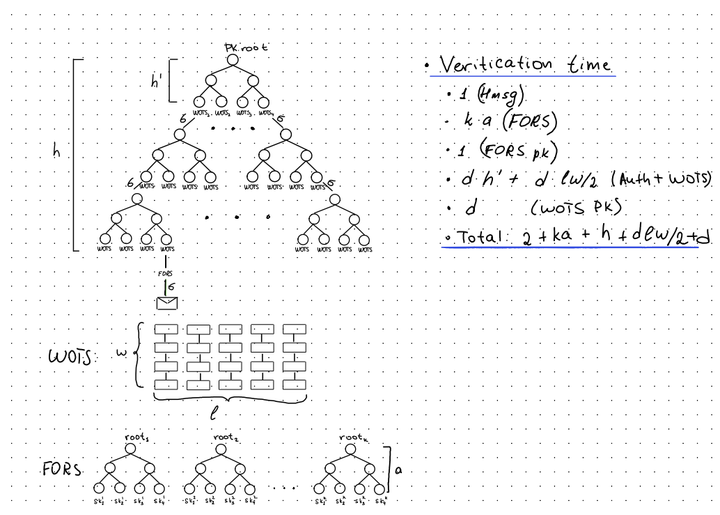What Is a Bitcoin Wrench Attack and How to Prevent and Prepare for One

If you’ve been around the Bitcoin block long enough, you might’ve stumbled across the term “$5 wrench attack.”
No, it’s not some newfangled hacking tool or a glitch in the blockchain.
It’s a lot simpler—and scarier—than that.
Picture this: someone walks up to you with a $5 wrench from the hardware store and says, “Hand over your Bitcoin, or else.”

That’s it. No fancy code, no phishing emails—just good old-fashioned coercion.
Today, we’re diving into what this attack really is, why it’s a big deal, and how you can keep your precious BTC safe from the wrench-wielding bad guys.
The $5 Wrench Attack: A Low-Tech Threat in a High-Tech World
The idea comes from an XKCD comic (because of course it does—geeks love comics).

It’s a cheeky reminder that even the most unbreakable encryption falls apart when someone’s threatening you with a blunt object.
In the crypto world, a wrench attack is when a thief skips the digital heist and goes straight for the human holding the keys.
They don’t need to crack your wallet’s 256-bit encryption—they just need you to crack under pressure and hand over your private keys or transfer your funds.
Why’s this a thing?
Because Bitcoin’s security is ironclad on the blockchain, but you and I?
We’re squishy, fallible humans.
As more people stack sats and crypto wealth grows, the incentive for real-world attacks rises.
Think about it: if someone knows you’ve got $50,000 in BTC sitting in a wallet, that $5 wrench starts looking like a pretty cheap investment.
Wrench attacks in the News
- Physical Attacks Against Bitcoin Holders Surge As BTC Price Rises
- Amouranth Bitcoin Robbery: Attackers Demand Crypto At Gunpoint
- Violent crypto robberies soar—spurring demand for ‘wrench attack’ insurance
- $100M Ledger Kidnapping: How Crypto Millionaires Became Crime Targets
How to Prevent a Wrench Attack: Don’t Paint a Target on Your Back
The best defense is not getting attacked in the first place. Here’s how to keep the wrench swingers at bay:
Shut Up About Your Stash
I get it—hitting a new Bitcoin milestone feels good.
But tweeting “Just bought 1 BTC!” or flashing your Ledger at the coffee shop is like hanging a neon sign that says “Rob Me.” Keep your holdings on the down-low.
Use anonymous handles online, avoid crypto swag in public, and don’t flex your HODL status unless you’re ready for the consequences.
Fortify Your Castle
If someone’s coming for your keys, they’ll probably start at home.
Beef up your physical security—deadbolts, a good alarm system, maybe some cameras.
A secure safe for your hardware wallet or seed phrase isn’t overkill either.
And if it’s legal where you live, a firearm or some self-defense training might make an attacker think twice.
Play Dumb
If people already know you’re into Bitcoin, downplay it.
“Oh yeah, I had some BTC, but I lost most of it trading altcoins.”
A little white lie can make you a less juicy target.
The less anyone thinks you’ve got, the less likely they’ll bother.
Spread It Out
Don’t keep everything in one spot.
Stash your hardware wallet or seed phrase in a bank safety deposit box or with a trusted friend across town.
If it’s not on you during an attack, they can’t get it—wrench or no wrench.
How to Prepare: Outsmart the Wrench
Okay, let’s say the worst happens—someone’s in your face demanding your Bitcoin.
Preparation can save your stack.
Here’s how to be ready:
The Decoy Wallet Trick
Set up a spare wallet with a small amount of BTC—say, $200.
If push comes to shove, hand that over with a sob story: “This is all I’ve got left after the last dip!”
Most attackers won’t stick around to double-check your blockchain history.
Having two hardware wallets come in handy here.
Multisig Magic
Multisignature wallets are your secret weapon.
Set up a 2-of-3 or 3-of-5 key system where you need multiple keys to move funds.
Keep them in different places (one at home, one in a safe deposit box, one with a buddy). Even if they get one key, they’re stuck—and you’ve got time to call for help.
Hidden Wallets and Duress PINs
Some hardware wallets like Trezor or Ledger let you create hidden wallets with a separate passphrase.
Use a duress PIN to open a decoy wallet with pocket change, while your real stash stays locked away. You can shrug and say, “That’s it, man,” and they’ll never know.
Lock It in Time
Tech-savvy HODLers can use Bitcoin’s scripting to time-lock funds, so even if you give up a key, the coins can’t move for a set period.
It’s not beginner-friendly, but it’s a solid “screw you” to an attacker while you figure out your next move.
Have a Plan
Memorize a duress code or signal for trusted contacts who co-sign your multisig wallet.
They’ll only approve a transfer if you say the magic words proving you’re safe. No code, no coins—simple as that.
The Bottom Line: You’re the Weak Link, Not Bitcoin
Bitcoin’s blockchain is a fortress, but you’re the gatekeeper—and gatekeepers can be bribed, tricked, or whacked with a wrench.
The $5 wrench attack isn’t about outsmarting tech; it’s about outsmarting you.
By staying discreet, securing your space, and setting up clever backups like decoys or multisig, you can make yourself a hard target—and keep your BTC where it belongs: in your wallet, not theirs.
Stay safe out there, HODLers.
The wrench is cheap, but your peace of mind doesn’t have to be.




Comments ()